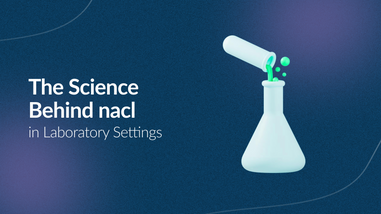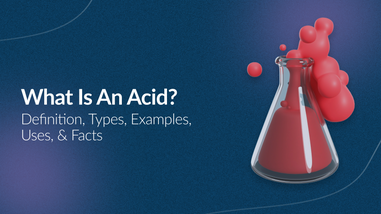- No products in the cart.
Achieving precise pH control is a critical aspect in various scientific and industrial applications, ranging from laboratories to manufacturing processes. The key to mastering pH control lies in understanding and harnessing the power of buffer solutions. In this blog, we will explore the intricacies of pH control, the importance of buffer solutions, and how to effectively utilize them to maintain optimal pH levels.
The Basics of pH:
pH, which stands for "potential of hydrogen," is a measure of the acidity or alkalinity of a solution. The pH scale ranges from 0 to 14, with 7 considered neutral, below 7 acidic, and above 7 alkaline. Many biological and chemical processes are highly sensitive to pH, making precise control crucial in various fields.
Importance of pH Control:
Controlling pH is vital for several reasons. In biological systems, enzymes and other biomolecules function optimally within specific pH ranges. In industrial processes, such as water treatment and pharmaceutical manufacturing, maintaining the desired pH ensures the efficiency of chemical reactions and the quality of the final product.
The Role of Buffer Solutions:
Buffer solutions play a pivotal role in pH control because they resist changes in pH when an acid or base is added. A buffer solution typically consists of a weak acid and its corresponding conjugate base, or a weak base and its conjugate acid. This equilibrium allows the buffer to absorb excess hydrogen ions (H⁺) or hydroxide ions (OH⁻) without significantly altering the pH of the solution.
Secrets of Effective Buffer Solutions:
-
Choosing the Right Buffer System: Selecting an appropriate buffer system is the first step in effective pH control. Different buffer systems operate optimally within specific pH ranges. For instance, the phosphate buffer system is effective in the physiological pH range, making it suitable for biological applications.
-
Optimizing Concentrations: The effectiveness of a buffer solution depends on the concentrations of the weak acid and its conjugate base (or weak base and its conjugate acid). Maintaining an appropriate concentration ratio ensures the buffer's ability to resist pH changes.
-
Understanding Buffer Capacity: Buffer capacity refers to the amount of acid or base a buffer solution can neutralize without a significant change in pH. Higher buffer capacity equates to greater resistance against pH fluctuations. Achieving optimal buffer capacity involves careful consideration of the concentrations of the buffering components.
-
Temperature Considerations: Buffer solutions are temperature-sensitive, and their effectiveness can vary with temperature changes. Understanding the temperature dependence of the buffer system is crucial for maintaining consistent pH control, especially in applications where temperature fluctuations are common.
-
Regular Monitoring and Maintenance: pH control is an ongoing process, and regular monitoring is essential to detect any deviations. Periodic checks and adjustments to the buffer solution ensure a stable pH environment over time.

Applications of Effective pH Control:
-
Biological Research: In biological laboratories, maintaining a stable pH is critical for cell cultures, enzymatic reactions, and other biochemical processes. Buffer solutions are indispensable tools for ensuring the success of these experiments.
-
Water Treatment: In water treatment plants, controlling the pH of water is crucial for the effectiveness of disinfection processes and the prevention of corrosion in pipes. Buffer solutions help maintain the desired pH levels in water treatment applications.
-
Pharmaceutical Manufacturing: The pharmaceutical industry relies on precise pH control during various stages of drug development and manufacturing. Buffer solutions play a key role in ensuring the stability and efficacy of pharmaceutical formulations.
Conclusion:
Mastering pH control is a fundamental aspect of scientific and industrial endeavors. Buffer solutions, with their ability to resist changes in pH, offer a powerful tool for achieving this control. By understanding the secrets of effective buffer solutions—choosing the right system, optimizing concentrations, considering buffer capacity, accounting for temperature variations, and implementing regular monitoring and maintenance—one can unlock the full potential of pH control in diverse applications. As we delve deeper into the intricacies of pH management, we pave the way for advancements in research, technology, and innovation across a spectrum of fields.
For over 40 years, Lab Pro Inc. has been committed to delivering highest quality lab chemicals, buffer solutions, lab supplies, hand tools, lab equipment, reagents, distance learning kits, and cleanroom PPE apparel. Renowned by global medical device companies and laboratories, we ensure exceptional quality in every product. Contact us online or call 888-452-2776 to learn more. Discover top-notch lab supplies and elevate your experiments today!












































